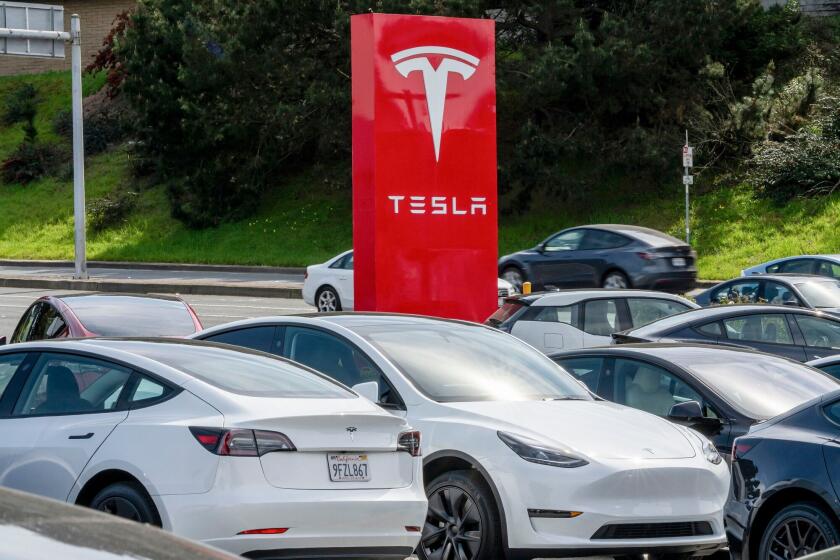A SPECIAL REPORT ON THE SOUTHERN CALIFORNIA ECONOMY : THE SOUTHLAND’S INDUSTRIES : Tourist Industry Expects a Bright Tomorrowland
- Share via
Fifteen years ago, typical visitors to Southern California came to see relatives and Disneyland, though not necessarily in that order.
Today, although 40% to 50% still visit family or friends and most still get to Disneyland, the typical tourist is also likely to see Rodeo Drive, South Coast Plaza, an art museum and maybe catch a play or concert--spending a lot more money in the process.
And the picture is only going to get better, observers of Southern California’s tourist industry predict, because the region is firmly established as a premiere vacation and convention spot of the world. Add to that the fact that Southern Californians are much more aware than ever of the importance of tourism to the local economy and are nurturing their hometown industry.
Fifteen years ago, California’s Department of Tourism didn’t even keep statistics on how many tourists poured how much money into Southern California. Today, statistics are abundant.
Tourism is a $35-billion-a-year industry statewide. Of that, nearly $20 billion is spent in Orange, San Diego, Los Angeles, San Bernardino and Ventura counties: $3 billion by international visitors and the rest by vacationing Americans.
In Los Angeles County alone last year, there were 49 million visitors, 16.2 million of whom stayed in hotels. Twenty percent of those tourists were from outside the United States and more than half a million were from Japan. Just under 500,000 tourists came here from Canada, while Australia, Great Britain and Mexico provided about 200,000 each. These figures, provided by the Greater Los Angeles Visitor & Convention Bureau, reflect a 5% increase every year since the Olympics in 1984.
“I’m bullish on the future,” said Ty Stroh, the bureau’s general manager and vice president of marketing.
Despite the rosy picture painted by tourism experts, however, few new tourist attractions are expected in the near future. “Construction takes more and more money, plus it’s just hard to find land,” says Jack Kyser, chief economist of the Los Angeles Area Chamber of Commerce.
Moreover, existing amusement centers are finding the competitive situation tougher. If they don’t unveil a new attraction every two years--a Splash Mountain (opening at Disneyland in 1989) or an upside-down swiveling roller coast (as yet unnamed, opening in 1988 at Magic Mountain)--everything else goes flat. While attendance at most Southland attractions--including Disneyland, Magic Mountain, Universal Studios and Knotts Berry Farm--has continued to rise, two others--Lion Country Safari and Marineland--have closed recently due to dwindling attendance.
Observers do see two potential new boosts to the local tourism industry in the next few years. Walt Disney Co. is negotiating to buy a 40-acre site off Interstate 5 in Burbank. There, Disney is proposing to expand its animation studios and add a hotel, restaurant, shopping and entertainment facilities.
And a proposed revamping of the Los Angeles Convention Center’s booking policy to pursue major conventions, rather than just trade shows as it does presently, “could have a staggering impact on the economy,” Stroh says.
Stroh says the booking of big conventions could add an estimated $500 million a year, compared to the $127 million a year currently spent by convention-goers on such things as hotels and restaurants. Already approved by the Los Angeles Convention Bureau, a revamping plan awaits a City Council vote.
An expansion of the convention center now under way should help attract these deep-pocketed conventioneers. Completion is expected by 1990, with 375,000 square feet of exhibit space added to the existing 235,000 square feet now available. According to Kyser, there is talk of increasing the city’s bed tax to 12% of a hotel bill from 11% to finance enhancement of these additions.
The prime concern about the future among people who deal in tourist-related activities in Southern California is the availability of labor. Hit hard by the “birth dearth” of the 1970s and the effect of the new immigration law, the tourist industry--which extends to hotels and restaurants--is having a difficult time finding both skilled and unskilled people who are willing to work holidays, night shifts and Sundays--all prime tourist time.
As a result, tourist businesses have been actively recruiting workers--something most have not been forced to do until now. For example, Disneyland, which has to compete with Knotts Berry Farm for its labor force, recently held a job fair--interviewing and hiring on the spot.
There is worry, too, that the recently passed increased minimum wage reform may be too drastic. In the food industry, where 32% of all employees receive minimum wage, raising the rate to $4.25 an hour from $3.35 “could cause some marginal (restaurants) to fail or jobs to be eliminated,” said Stan Kyker, executive vice president of the California Restaurant Assn. “You may not see the impact on payroll sheets, the people may be there, but there will be fewer hours (worked).”
An additional concern: personal safety. “It’s a problem in Spain, New York, just about all tourist areas. It’s just a constant,” Kyser says, “but this year, particularly with the freeway shootings and earthquakes, it’s something we talk a lot about.”
More to Read
Inside the business of entertainment
The Wide Shot brings you news, analysis and insights on everything from streaming wars to production — and what it all means for the future.
You may occasionally receive promotional content from the Los Angeles Times.









